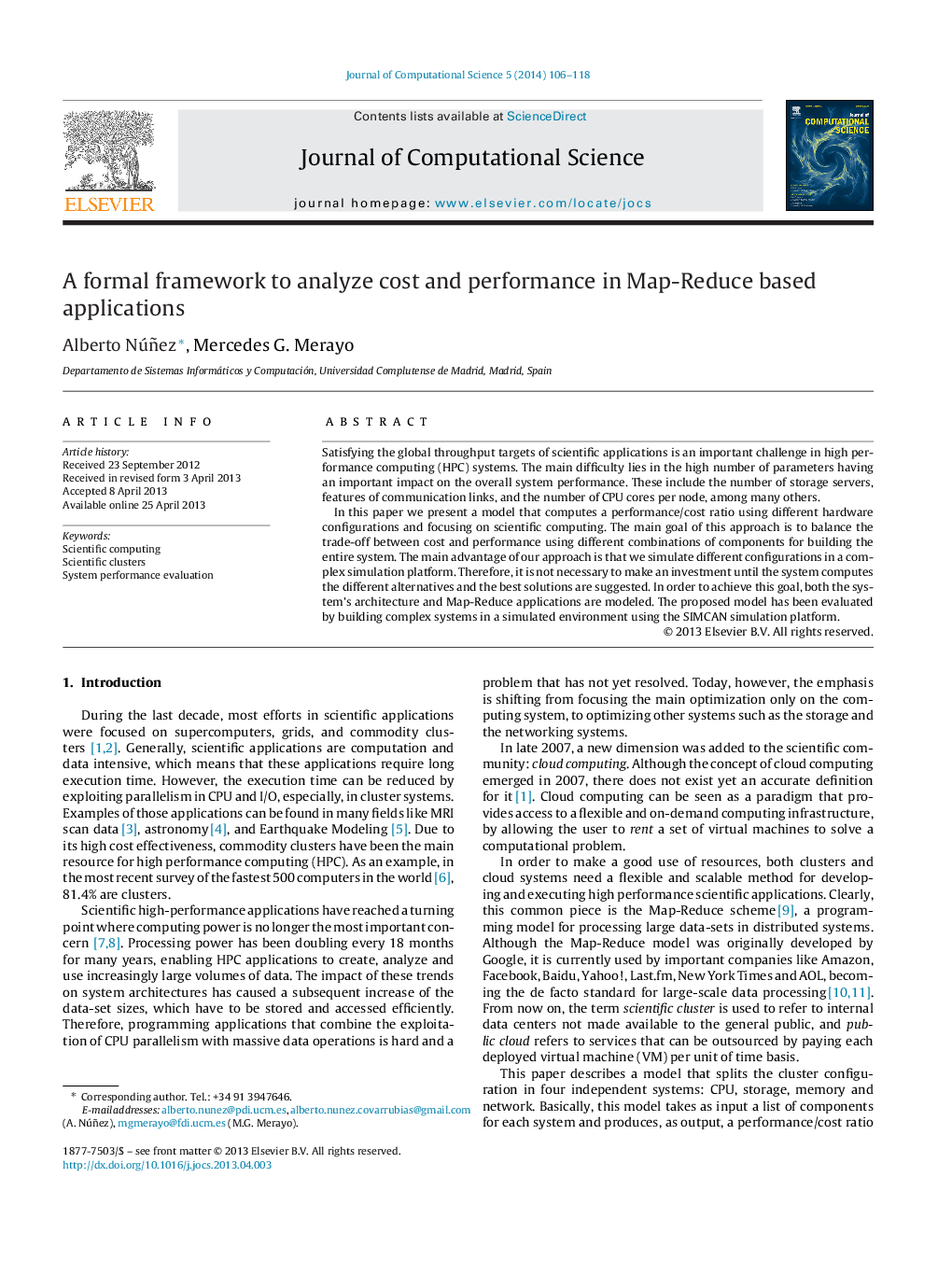| Article ID | Journal | Published Year | Pages | File Type |
|---|---|---|---|---|
| 429383 | Journal of Computational Science | 2014 | 13 Pages |
Satisfying the global throughput targets of scientific applications is an important challenge in high performance computing (HPC) systems. The main difficulty lies in the high number of parameters having an important impact on the overall system performance. These include the number of storage servers, features of communication links, and the number of CPU cores per node, among many others.In this paper we present a model that computes a performance/cost ratio using different hardware configurations and focusing on scientific computing. The main goal of this approach is to balance the trade-off between cost and performance using different combinations of components for building the entire system. The main advantage of our approach is that we simulate different configurations in a complex simulation platform. Therefore, it is not necessary to make an investment until the system computes the different alternatives and the best solutions are suggested. In order to achieve this goal, both the system's architecture and Map-Reduce applications are modeled. The proposed model has been evaluated by building complex systems in a simulated environment using the SIMCAN simulation platform.
